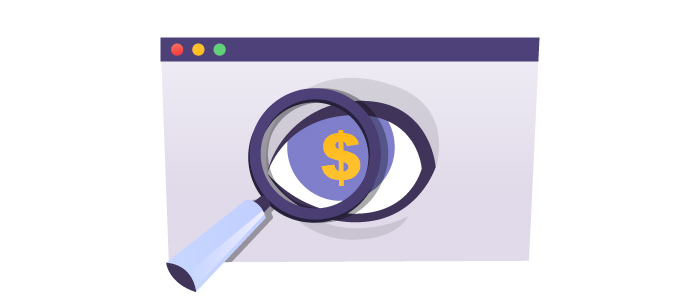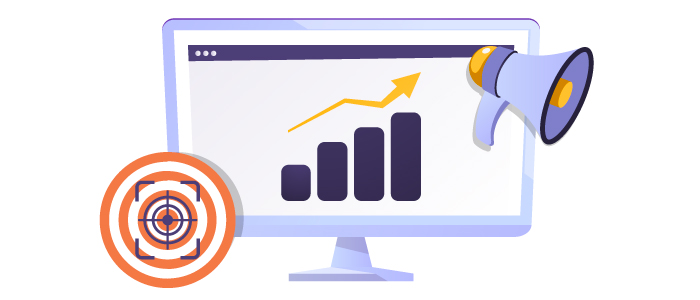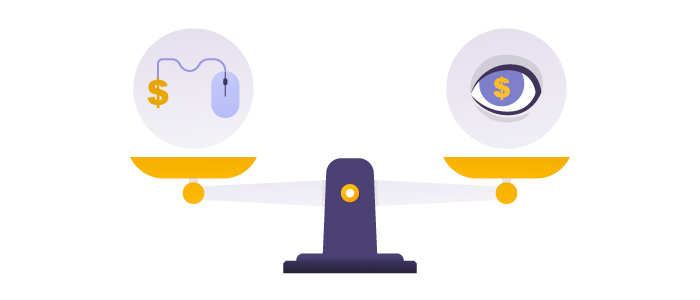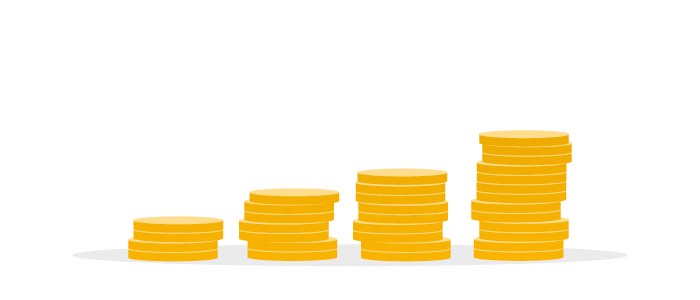The Secrets of eCPM vs. CPM
If you want to succeed in online advertising and learn the secrets of ad impressions, you must understand the difference between eCPM vs. CPM and uncover their secrets.
Both advertisers and publishers need to know this to determine how well their ads perform, how to make more money, or how to increase their ads’ visibility. Focusing on these measures can help them make smarter decisions to achieve their goals.
So, are you ready to see what it takes to bring the ad campaigns to the next level?
Table of Contents
What is eCPM?

CPM and eCPM have similar definitions. However, eCPM, or “Effective Cost Per Thousand Impressions,” refers to how much an advertiser actually pays for an ad slot for one thousand impressions or how much revenue an ad slot really gets for one thousand impressions.
Thus, eCPM is important because it helps mainly publishers figure out how profitable their advertising spaces are.
When we say publishers, we refer to website and app owners who make money by showing ads to their users. And if the eCPM goes up, it means publishers make more money from their ads.
To ensure profitable ads, publishers need to choose the right ads to show to their users. They need to test different ad formats, like videos, and determine which works best. They also need to ensure the ads are easy to see and don’t annoy users too much.
For example, when managing a website that sells fruit, you’ve opted to feature fruit gardening and recipe ads. Over a week, your site generates $120 in ad revenue from 30,000 impressions. To compute the eCPM for this situation, the formula is as follows:
eCPM= Ad Revenue/Impressions x1,000
By applying this formula:
- The total revenue generated is $120.
- The total number of impressions is 30,000.
- Convert the total number of impressions to units of 1,000, which gives 30 (since 30,000 divided by 1,000 equals 30).
- The eCPM is then calculated by dividing the total revenue by the number of units of 1,000 impressions. Thus, $120 divided by 30 equals $4.
In this hypothetical scenario, the eCPM is $4, indicating that for every 1,000 ad impressions on the fruit-related website, earnings of $4 in ad revenue are realized.
eCPM Importance for Publishers

Publishers use eCPM to measure the revenue-generating success of their ad inventory. eCPM compares the value of different ad placements to help publishers identify the most profitable locations on their platforms.
]By analyzing eCPM values, publishers can optimize their ad placement strategies by rearranging ad locations, modifying content to match high-value ads, or changing the displayed ads. Also, you can look up tips to improve your display ads to ensure you’re on the right track.
eCPM also enables publishers to benchmark their ad spaces against the market, ensuring they are not undervaluing or overpricing their inventory. This balance is vital for attracting a healthy mix of advertisers while maintaining a steady revenue stream.
eCPM provides a standardized metric for comparing performance across diverse ad formats and pricing models for publishers working with multiple advertisers or ad networks. This comparability is critical for making informed decisions about which advertising partners and models offer the best return on investment.
As a result, publishers can strategically allocate their inventory to the highest bidders or most effective ads, enhancing their overall revenue.
By analyzing eCPM data, publishers can gain insights into which audience segments are most valuable to advertisers. This understanding allows publishers to tailor their content and marketing strategies to attract and retain these high-value segments, increasing their sites’ attractiveness to advertisers and boosting eCPM rates.
What is CPM?

CPM, or cost per thousand impressions, is used in digital marketing to show how much advertisers pay every thousand times their ad appears on a webpage. An impression is counted every time an ad is loaded and viewed. This is different from a page view. CPM is mainly used in online advertising, including platforms like Google Ads that offer CPC (cost per click) options.
CPM is effective for campaigns that aim to increase brand awareness. It charges advertisers based on how many times their ad is displayed, regardless of clicks or user interactions. Advertisers can use CPM to forecast the total cost of engaging their target audience and measure the impact of their campaigns on brand recognition and social targeting.
However, if you have a small or niche company targeting a specific audience, CPM might not be the best advertising model for you. This is because it does not guarantee direct engagement or measurable conversions. CPM is not the primary metric for optimization, but changes in CPM rates can help identify targeting discrepancies or issues with ad placement quality.
CPM is also important for publishers, showing the revenue generated per thousand ad impressions.
For example, let’s say you have a lemonade stand and want to advertise it on a local food blog. The blog charges you based on the CPM model:
CPM=Number of Impressions/Cost of Advertising ×1000.
You pay for every thousand times your ad appears to readers. If your CPM rate is $2.00 and you expect your ad to be seen 10,000 times, the campaign’s cost can be calculated as follows:
CPM = (Number of Impressions/Cost of Advertising) × 1000 or (10,000/1,000) × 2 = 10 × 2 = 20.
This means that the advertising campaign will cost $20 for an expected 10,000 views of your lemonade ad at a CPM rate of $2.00. Such calculations help you create an advertising budget for the campaign and gauge its potential reach.
In conclusion, CPM is a critical strategy for advertisers who want to improve brand visibility. For publishers, it represents the revenue earned from thousands of ad impressions.
CPM Importance for Advertisers

Advertisers must know if they’re getting value for their money when it comes to CPM (cost per thousand impressions) in advertising campaigns. This helps them find a balance between advertisement costs and the results they get, like brand awareness or conversions. CPM can effectively reach a large audience and generate leads, making it a cost-effective method.
Advertisers can successfully target potential customers. However, it’s important to consider the quality of impressions since not all impressions lead to action. A higher CPM doesn’t always mean better quality, and a lower CPM might not be effective if it does not convert to sales or desired actions. So, it’s important to consider both impression cost and quality.
CPM advertising provides rich data businesses can use to refine their strategies for better results. Nonetheless, potential advertising fraud and the possibility of ads reaching uninterested audiences are challenges. This emphasizes the importance of choosing reputable platforms and continuously optimizing campaigns.
Advertisers should choose the right ad network to maximize a CPM campaign, understand seasonal changes in CPM rates, and consider using supply-side platforms (SSPs) to boost their chances of earning higher CPMs.
Understanding and adapting to these factors can help advertisers improve their CPM campaigns, increase their ROI, and achieve their marketing goals.
eCPM vs. CPM Key Differences & Comparison

| Aspects | eCPM | CPM |
| Full Form | Effective Cost Per Mille or Effective Cost Per Thousand Impressions. | Cost Per Mille or Cost Per Thousand Impressions. |
| Used By | Publishers | Advertisers |
| Formula | eCPM= (Total ad revenue/Total ad impressions) *1000 | CPM= (Total campaign budget/ Total ad impressions) *1000 |
| Purpose | Measure earnings per 1000 impressions and predict income. | Compare prices of various publishers’ inventories and bid fair amounts. |
| Main Difference | eCPM shows how much ad revenue the publisher has generated on average from 1000 ad impressions. | CPM shows the advertiser’s cost of 1000 ad impressions. |
| Impact on Revenue | Focusing on eCPM can enhance publishers’ revenue per impression, leading to increased overall revenue. | CPM helps advertisers allocate budgets and optimize campaigns. |
| Tracking Over Time | Tracking eCPM over time can identify trends and improve revenue over the long term. | CPM is usually calculated at the beginning of a campaign. |
| Future Considerations | Viewability metrics may need to be considered in eCPM calculations. | New ad formats and privacy regulations may impact CPM and eCPM. |
The difference between eCPM and CPM is their focus. eCPM shows how much revenue an impression generates, while CPM shows how much an impression costs. Publishers can increase their revenue per impression by focusing on eCPM, while advertisers can allocate budgets and optimize campaigns by focusing on CPM.
Tracking eCPM over time can help identify trends, while CPM is typically calculated at the start of a campaign. It’s important to consider how viewability metrics and new ad formats may impact both eCPM and CPM in the future.
eCPM vs. CPM: Revenue & Budgeting

To optimize eCPM and CPM effectively, publishers and advertisers must adopt a holistic approach encompassing a range of strategies, including the judicious use of eCPM floors and improving content, user experience, and ad creatives. Here’s a reorganized outline that integrates these elements:
For Publishers:
- Enhance content quality and relevance to attract and retain a strong visitor base.
- Improve the overall user experience by focusing on site speed and mobile optimization, encouraging longer and more meaningful engagement.
- Strategically place ads to ensure visibility while maintaining a positive user experience, avoiding intrusive or disruptive ad placements.
- Integrating eCPM floors sets a minimum CPM bid for ads, protecting revenue. Adjust floors based on geography, device type, or specific ads for refined revenue management. Monitor carefully to avoid lost revenue.
- Diversify ad formats and explore different ad networks to uncover additional revenue opportunities.
- Regularly analyze performance data to identify optimization opportunities.
- Use ad refresh strategies to increase impressions without compromising the user experience.
For Advertisers:
- Utilize precise targeting and segmentation techniques to reach the desired audience more effectively.
- Engage in continuous testing and optimization of ad creatives to improve performance.
- Adapt bidding strategies based on comprehensive performance data and insights into audience preferences.
- Ensure landing pages are optimized for conversions, thereby improving the effectiveness of campaigns.
- Leverage the efficiency of programmatic buying to secure ad inventory cost-effectively.
- Monitor campaign performance meticulously, implementing ad fraud prevention measures to safeguard investments.
FAQ
The main difference between CPM and eCPM is that CPM shows the cost of 1000 ad impressions, while eCPM shows the revenue generated from 1000 ad impressions.
eCPM is how much money a website makes from ads. Some things can make eCPM higher or lower. If the country has lots of people, eCPM is usually higher. When shopping times are busy, like Christmas, eCPM is higher. Usually, eCPM varies between $4 and $10, but it can be more or less due to many factors.
A high CPM indicates a weak campaign and the need for improvement to increase ad views.
The average cost per thousand impressions (CPM) for Google Display Ads is $3.12, for Google Search Ads is $38.40, and for Facebook Ads is $8.60. Your ads perform well if your CPM is lower than these industry averages.
A good CPM helps the company reach its goals. Sometimes, a cheaper CPM is not the best option because it might reach too many people who will not buy the advertised product. In contrast, a more expensive CPM is not the best option because the company might not have enough money to spend.
The United States is known for having one of the world’s highest eCPMs, especially regarding mobile advertising. This is largely due to the country’s large digital market and the high purchasing power of its audience. Other countries with high eCPMs often include Australia, Canada, and some Scandinavian countries.
Final Thoughts on eCPM vs. CPM
To do well in online ads, knowing the difference between eCPM vs. CPM is key.
You pay CPM to show your ad 1000 times, while eCPM is what you make when your ad is shown 1000 times. Both advertisers and website owners need this information to see how ads are doing and to earn more.
Think of CPM as advertisers’ cost plan and eCPM as site owners’ earnings. Using tools to check ad performance can also help. Yet, understanding eCPM vs CPM can help improve your online ads. You can focus on these indicators for smarter decisions.